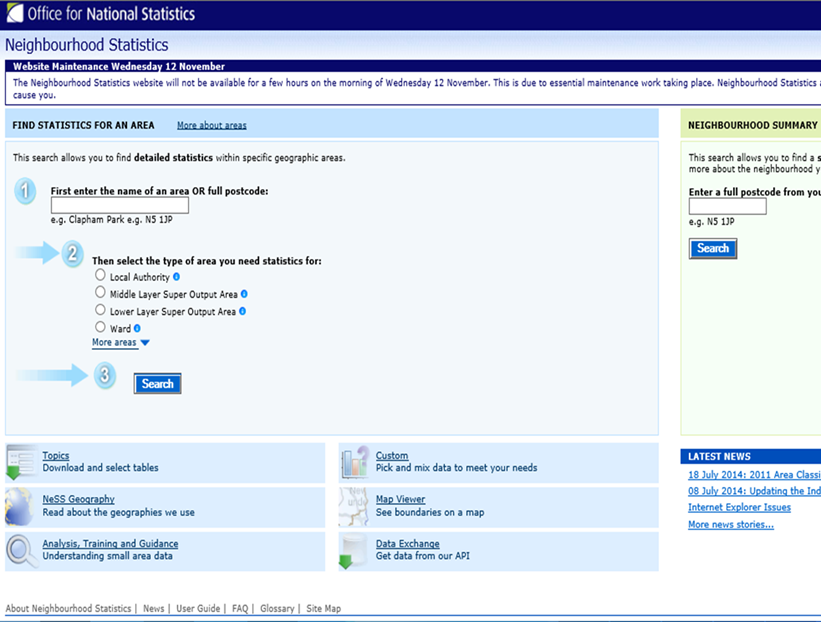Health and Social Care Community Profiles
The more widespread availability of statistical data on the Internet provides new opportunities for the voluntary sector to explore local issues related to health inequalities. In addition there is also access to local knowledge and strategic planning information, as well as academic literature related to health inequalities, which provides useful additional background information, knowledge or local based data.
Community and voluntary sector organisations can contribute to local strategic planning around health and social care, if they understood in more detail, the needs of their communities better. Information could also be used to support the activities of local health activists, political parties all politicians, and other community or public sector health-related work.
Often city council level analysis of needs doesn’t reach down, to the local level at which health inequalities are experienced. County council, unitary or district level strategic planning doesn’t always identify local communities detailed needs. For example, data analysis is often at district or unitary level, or examining (at best), ward level differences. Communities across Ward level boundaries or lie within the Ward areas. Issues such as physical location, the physical environment and the layout of transport links can actually create or exacerbate issues around access to services for groups of people or for specific communities. Issues like these are of real interest to local community groups, who are working within these communities in areas.
Information could be used within the voluntary and community sectors for their own strategic planning; preparing funding bids and supporting those bids, service review and development, etc. Community groups could benefit from a needs assessment of particular groups or communities locally, and comparisons with other groups or areas- to inform their service delivery.
However, getting access to the right information – and putting it together in the right way can be a challenging, for those who have more experience of service delivery and voluntary sector work, than of research. The Internet websites providing official statistics for example, all work in a slightly different way – and provide data at different levels in different formats.
Increasingly, statistical data websites offer more sophisticated tools to enable more detailed analysis at a lower level – in fact, there are websites that allow bespoke data analysis to fit the needs of the organisation. This can be to level of community, rather than at the level of ‘administrative areas’. Communities stretch across Ward boundaries, and share common problems accessing services, and so on. These can be ‘hidden needs’ in strategic planning (that doesn’t penetrate down to that level, or embrace the’ natural form’ of different communities within larger areas). One example is the Neighbourhood Statistics website, where it’s possible to create lower-level census output areas into bespoke community or geographical areas.
The key to getting information that’s relevant, and can inform the organisation’s work – is forward planning and thinking. The organisations remit, and the aims of the particular research project need to be spelt out carefully – and possibly negotiated with stakeholders before any actual data collection begins.
The process of deciding what the research aims are, and linking this to the organisational needs is the most crucial part of the planning required to make best use of available data. This process can be broken down into ten stages, which are outlined in this training video below. It uses using the example of a profile for a community group’s application for funding for a ‘neighbourhood care service’ in a deprived area. It explains in detail how to think about planning and doing a community profile. The focus of this example is looking at ‘care needs and capabilities’ within this deprived area, related to the potential for a neighbourhood care service.
Kate Bloor – KNVresearch January 2014


